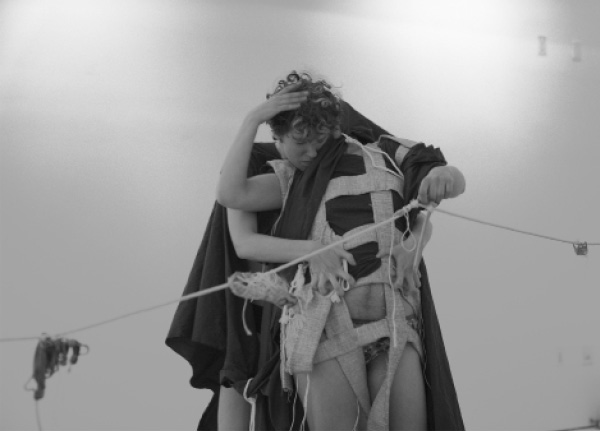
KNOW WHAT SMOKES
first performed on April 1, 2017
University of Arkansas Arts and Design District, Fayetteville, AR
performed once in 2017
KAIA GILJE / LORENE BOUBOUSHIAN
Brooklyn, NY
320192750l320192750o320192750r320192750e320192750n320192750e320192750.320192750b320192750o320192750u320192750b320192750o320192750u320192750s320192750h320192750i320192750a320192750n320192750@320192750g320192750m320192750a320192750i320192750l320192750.320192750c320192750o320192750m
lorenebouboushian.org
KNOW WHAT SMOKES
KAIA GILJE / LORENE BOUBOUSHIAN
“Know What Smokes” is an improvisational duet in which we attempt to activate sensation through touch that ranges from tender to sensual, surprising, painful, mundane, and absurd. We communicate through touch, and explore the room with our eyes closed. We engage with each other through cooperation and confrontation. We dilate moments of uncertainty, empathy, and refusal. We make space to consider where an action begins or ends, how power dynamics arise, and how we experience our many thresholds of giving and receiving touch.
The other performer’s body becomes a grounding point, a site of incoming information, a known and unknown place that attracts and repels. We become isolated when we are out of physical reach of each other. Sometimes we end up at distant points in the room, where we either apply methods to orient our bodies utilizing tactile or sonic information, or stay in isolation and work to allow our bodies to express the impulses experienced in that state. Thresholds of pain, confusion, isolation, or other kinds of intolerance are encountered.
Our knowledge of what the other performer is doing is limited to what we can physically feel of their body while they are doing it, what we can hear, or what we can imagine. Often our imaginations are wrong. Once Lorene peed small puddles of pee throughout the space. And then opened her eyes and directed Kaia to find them—feeling wet with her hands. Surprise. Touching out of curiosity.
Part way through, one performer picks “the wrong moment” to open their eyes and continues the rest of the performance with eyes open. This leaves them in a position to consider their new role in terms of power, responsibility, and embarrassment, in relationship to the audience and the other performer. We strive for humor and embrace the accidents that come out of the possibilities that arise for one performer to trick another, which is easy because they have their eyes closed. We use the absurd as a relief from the rawness and pain that wells up in this performance.